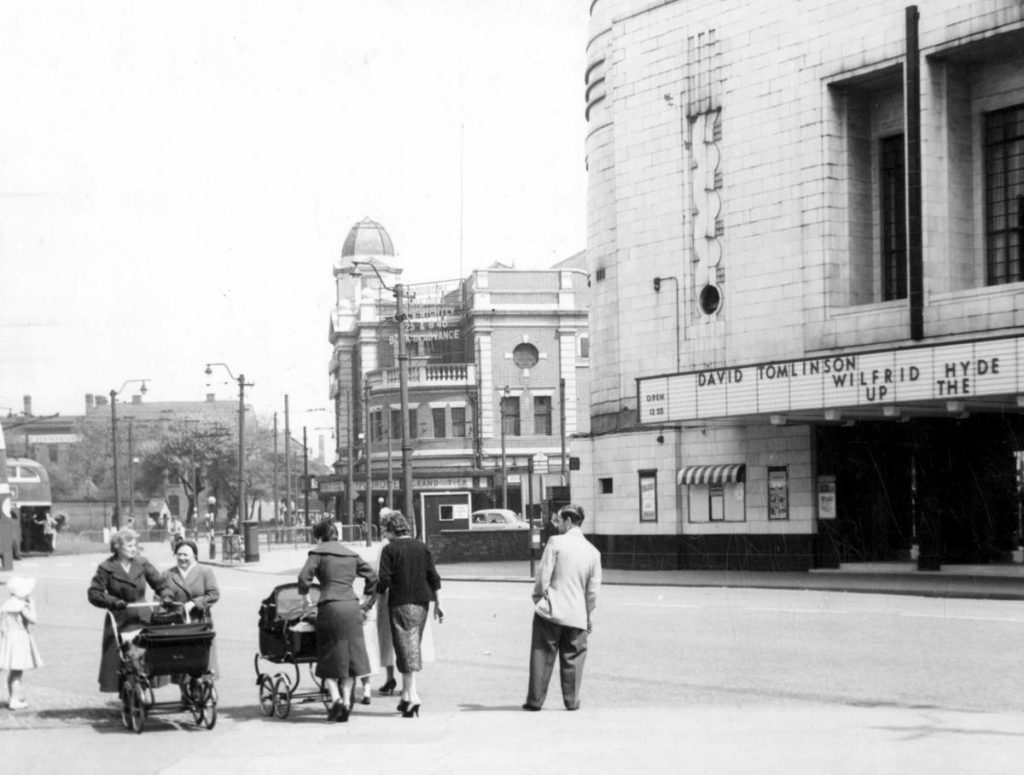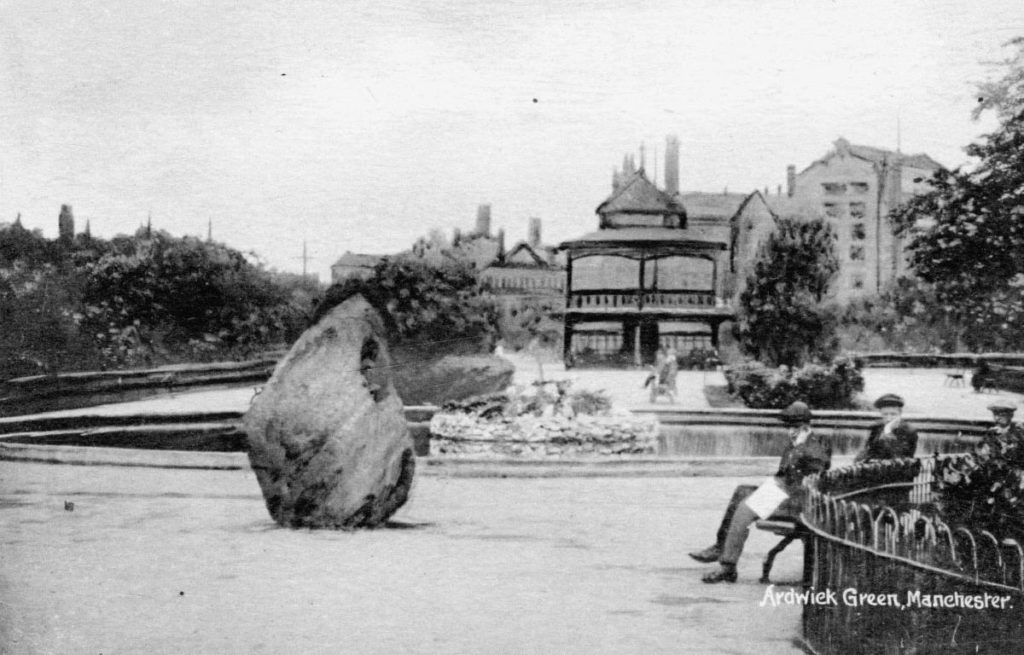Birth of a suburb

In the middle ages Ardwick was one of 30 townships that made up the parish of Manchester. The Industrial Revolution (1740-1860) had a huge impact on the whole of Manchester, with the opening of many mills and factories. Ardwick was walking distance from the cities’ industry so became popular with businessmen and resulted in the development of possibly the world’s first suburb.
The township went from a population of 242 (in just 47 houses) in 1773 to over 5000 residents in 1831. In 1838 Ardwick was incorporated into the new borough of Manchester and went on to grow to a population of 15,000 in 1851 and then over 40,000 by 1901.
The then fashionable area attracted the opening of recreational establishments such as the Empire Music Hall – which later became a cinema, and then the Hippodrome; the Ardwick Picture House – which was sadly destroyed in a bomb raid only 20 years after opening; and the Apollo – which was host to the Beatles in their hay day and is still a significant venue for Manchester’s music scene.
Ardwick Green

In 1816 Ardwick Green was considered “one of the best built and most pleasant suburbs in the kingdom”. It had elegant houses and an expanded green with a lake in the middle, and was inhabited by wealthy merchants and professionals.
A decade later an Act of Parliament allowed the erection of iron bars, posts and chain to protect the Green. Later gates and fencing enclosed the area completely and residents were given keys and paid maintenance. This wasn’t successful so John Kennedy of Ardwick Hall agreed to maintain it and the area was made public again.
In 1867 the council took over the Green and created a public park with a bandstand, a fountain and two paddling pools, as well as the glacial erratic which is still there today.
The Green remains a public park on what is now affectionately dubbed ‘Voluntary Sector Row’ due to the number of charities located on the street. The park is well used by workers from these charities and local businesses as well as the local residents.
St Thomas Centre

In 1740 Samuel Birch, a local businessman, gave land to erect a chapel for “the ease and convenience of the inhabitants of Ardwick and Chorlton Row lying remote from the Mother Church of Manchester”. The St Thomas church was consecrated by the Bishop of Chester in 1741.
In 1777 the church was extended to create south and west aisles, a gallery and organ gallery. In 1787 an organ was added, built by Samuel Green (organ builder to King George III). The organ is now located in St Paul’s Church, Pendleton. An Italian style campanile (bell tower) was added in 1836. The building served the local people for two centuries until it closed in 1978.
Two years later Manchester Council reopened the building and it was converted from a church into a commercial building. GMCVO took over management of the now named St Thomas Centre in 2001. The first floor is now offices occupied by GMCVO staff and other charities who rent fully managed office space. The ground floor is a fully equipped conference centre, run by GMCVO as a social enterprise to help fund their charitable work supporting the voluntary sector in Greater Manchester.
Although no longer a church, many of the building’s original features have been retained, including the decorative ceiling and walls in the main hall, the bell tower and graveyard, and visitors still come to see how the building has changed over the years.
Ardwick’s claims to fame
John Rylands, ‘Manchester’s Merchant Prince’ and probably Manchester’s first millionaire lived on Ardwick Green North in the 1850’s.
Ellen Wilkinson, a Politician who became the first female Minister for Education was born in Ardwick in 1891. She campaigned for women’s rights, championed the Jarrow March and oversaw the implementation of the 1945 Education Act and introduced free school milk for all school children.
Elizabeth Gaskell, the Victorian novelist lived in Ardwick for the final 15 years of her life in the mid 1800’s. During this time she wrote most of her novels, including Cranford, Ruth, North and South and Wives and Daughters.
Ardwick was home to many pubs and hotels, with the Hyde Road Hotel becoming the HQ of Ardwick AFC who went on to become Manchester City FC.
Images courtesy of Manchester Libraries, Information and Archives, Manchester City Council

